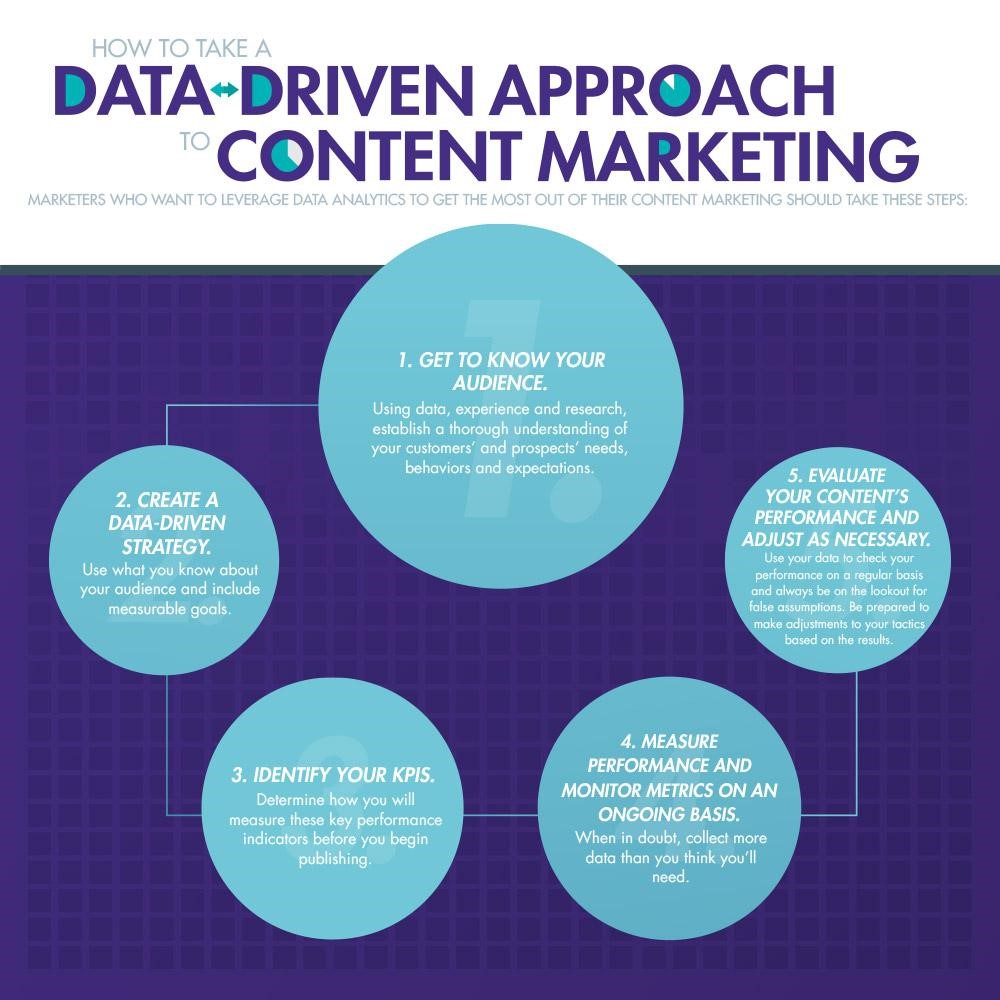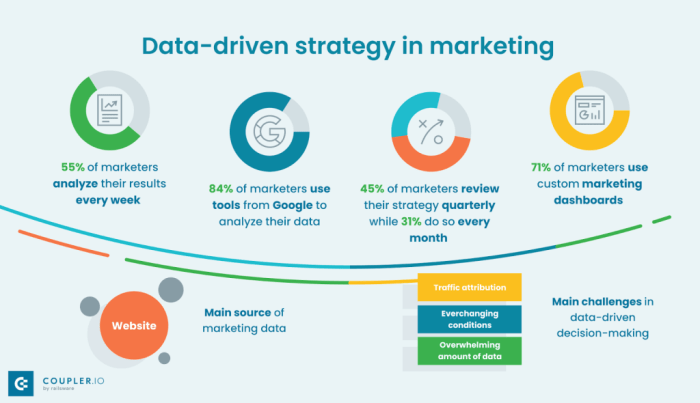Creating a Data-Driven Marketing Plan kicks off the journey into the realm of strategic marketing, where data reigns supreme and guides every decision with precision and finesse. Dive into the world of digital marketing where numbers, insights, and analytics shape the future of successful campaigns.
As businesses navigate the complex landscape of modern marketing, harnessing the power of data becomes not just a choice, but a necessity for staying ahead of the curve and connecting with audiences on a deeper level.
Introduction to Data-Driven Marketing Plan
In today’s digital landscape, a data-driven marketing plan is essential for businesses to thrive. This approach involves utilizing data to make informed decisions and create targeted strategies that drive results.Data is a crucial component in developing effective marketing strategies as it provides valuable insights into consumer behavior, preferences, and trends. By analyzing data, businesses can better understand their target audience and tailor their marketing efforts to meet their needs.The benefits of utilizing data-driven approaches in marketing campaigns are vast.
From improving customer engagement to increasing ROI, data-driven strategies enable businesses to optimize their marketing efforts and achieve measurable results.
Importance of Data in Marketing Strategies
Data allows businesses to personalize their marketing messages, target the right audience, and track the performance of their campaigns effectively. By leveraging data, businesses can stay ahead of the competition and build stronger relationships with their customers.
Setting Objectives and Goals

Setting objectives and goals is a crucial step in creating a data-driven marketing plan. By following the SMART criteria – specific, measurable, achievable, relevant, and time-bound – businesses can ensure that their goals are clear, trackable, and attainable.Aligning these objectives with overall business goals is essential for driving success in marketing initiatives. When marketing goals are in sync with the broader organizational objectives, it becomes easier to measure progress and demonstrate the impact of marketing efforts on the bottom line.
Key Performance Indicators (KPIs)
- Conversion Rate: Tracking the percentage of website visitors who complete a desired action, such as making a purchase or signing up for a newsletter.
- Customer Acquisition Cost (CAC): Calculating the cost of acquiring a new customer through marketing efforts.
- Customer Lifetime Value (CLV): Determining the total value a customer is expected to bring to a business over their lifetime.
- Return on Investment (ROI): Measuring the profitability of marketing campaigns by comparing the cost of investment to the revenue generated.
- Click-Through Rate (CTR): Evaluating the effectiveness of online ads by measuring the percentage of users who click on a specific link.
Data Collection and Analysis: Creating A Data-Driven Marketing Plan

In order to create an effective data-driven marketing plan, it is crucial to gather data from various sources and analyze it to extract valuable insights for decision-making.
Sources for Data Collection
- Website Analytics: Utilize tools like Google Analytics to track website traffic, user behavior, and conversion rates.
- Social Media Insights: Monitor engagement metrics, audience demographics, and trends on platforms like Facebook, Instagram, and Twitter.
- Customer Feedback: Collect feedback through surveys, reviews, and direct interactions to understand customer preferences and satisfaction levels.
- Market Research: Conduct industry studies, competitor analysis, and trend research to stay informed about the market landscape.
Importance of Data Quality
Accuracy, relevance, and timeliness are key factors when it comes to data quality in the decision-making process. Inaccurate or outdated data can lead to misguided strategies and ineffective campaigns.
Data quality is essential for making informed decisions and executing successful marketing initiatives.
Data Analysis Techniques, Creating a Data-Driven Marketing Plan
- Data Mining: Use algorithms and statistical models to discover patterns and relationships in large datasets.
- Segmentation: Divide data into meaningful segments based on demographics, behavior, or other criteria to personalize marketing efforts.
- Regression Analysis: Identify correlations between variables to predict future outcomes and optimize marketing strategies.
- Data Visualization: Represent data in visual formats like charts, graphs, and dashboards to facilitate understanding and decision-making.
Target Audience Segmentation
In the world of data-driven marketing, segmenting target audiences is a crucial step in creating effective campaigns that resonate with specific groups of people. By dividing your audience based on demographic, psychographic, and behavioral factors, you can tailor your marketing messages to address their unique needs and preferences.
Significance of Audience Segmentation
Segmenting your target audience allows you to deliver personalized messages that are more relevant and engaging to different groups of people. This approach helps you connect with your audience on a deeper level, increasing the likelihood of conversions and long-term customer loyalty.
- Demographic factors: These include age, gender, income, education level, and more. Segmenting by demographics helps you understand the basic characteristics of your audience and target them accordingly.
- Psychographic factors: These focus on the attitudes, beliefs, values, and lifestyle choices of your audience. By segmenting based on psychographics, you can create messaging that resonates with their interests and motivations.
- Behavioral factors: This involves analyzing how your audience interacts with your brand, such as purchase history, website activity, and engagement with marketing campaigns. Segmenting by behavior allows you to target specific actions or preferences of your audience.
Examples of Successful Campaigns
One notable example of successful audience segmentation is Amazon’s personalized recommendation system. By analyzing customer purchase history and browsing behavior, Amazon tailors product recommendations to individual users, increasing the likelihood of purchases and customer satisfaction.Another example is Spotify’s Discover Weekly playlist feature, which curates a personalized playlist for each user based on their listening habits and preferences. This targeted approach keeps users engaged and coming back to the platform regularly.By implementing audience segmentation strategies like these examples, marketers can create more impactful campaigns that drive engagement and conversions among specific audience segments.
Implementation of Data-Driven Strategies
Implementing data-driven strategies across various marketing channels is crucial for maximizing the effectiveness of your campaigns. By leveraging data insights, you can tailor your messaging and targeting to better engage with your audience. Here are some steps to follow and tips to integrate data insights into different marketing activities:
Integrating Data Insights into Content Creation
- Create content based on customer preferences and behavior data.
- Personalize content to resonate with your target audience.
- Analyze content performance metrics to optimize future content creation.
Utilizing Data in Email Marketing
- Segment your email list based on customer data for more personalized campaigns.
- Use A/B testing to determine the most effective subject lines, content, and CTAs.
- Track email engagement metrics to refine your email marketing strategy.
Enhancing Social Media Campaigns with Data
- Utilize social media analytics to understand audience behavior and preferences.
- Tailor your social media content based on data insights to increase engagement.
- Monitor social media KPIs to measure the impact of your campaigns.
A/B Testing and Optimization for Data-Driven Marketing
- Conduct A/B tests to compare different variations of your marketing campaigns.
- Optimize campaign elements based on data-driven insights to improve performance.
- Continuously test and refine your strategies for optimal results.
